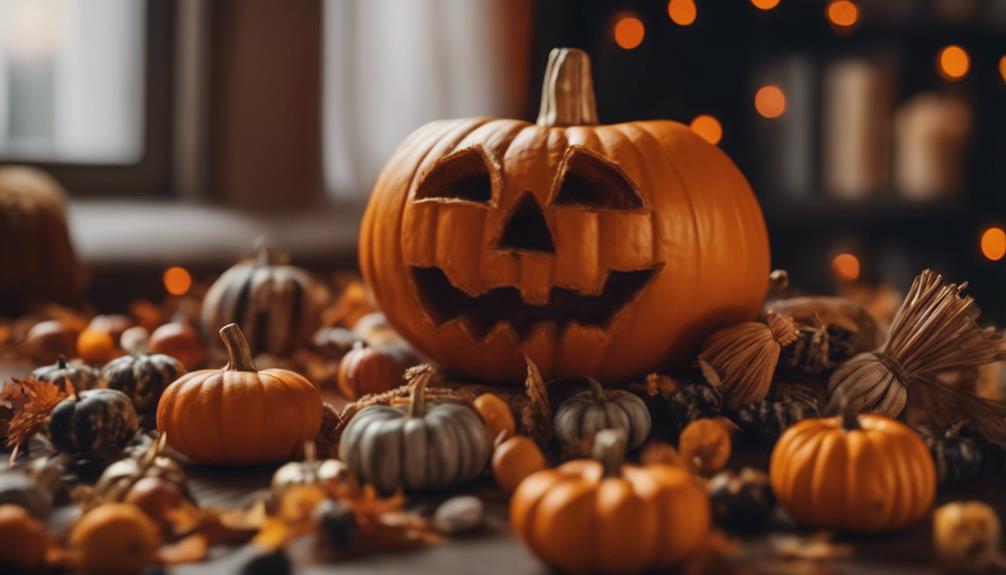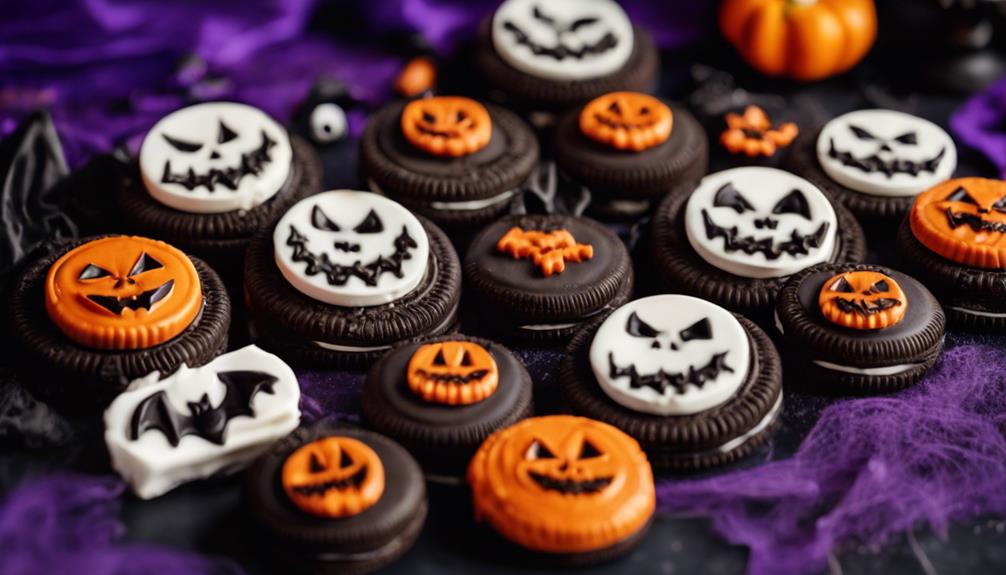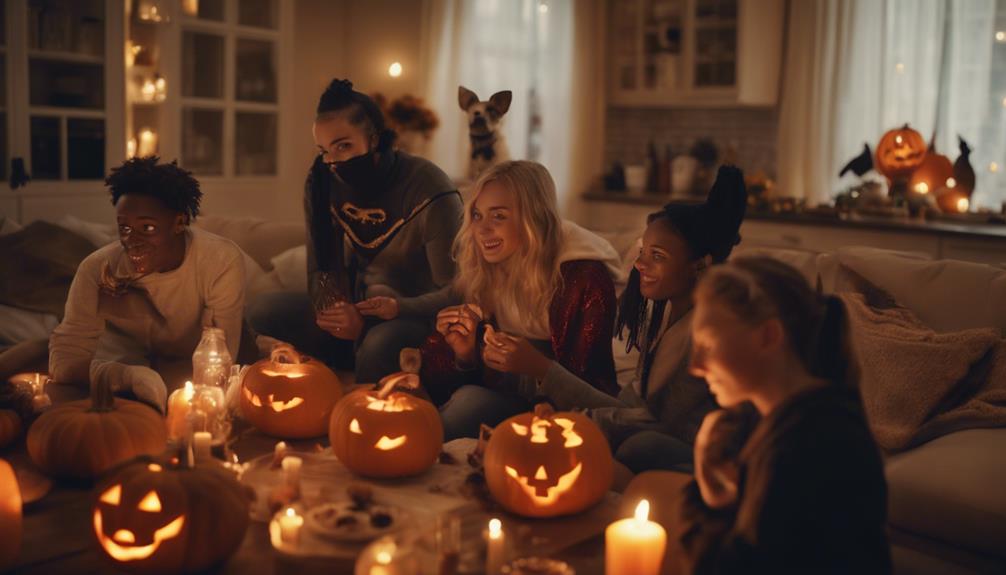In Poland, Halloween isn't typically celebrated. Instead, the country honors All Saints Day and All Souls Day in late October and early November with grave visits, candles, and prayers to remember and pay respects to the departed. While some Polish families host Halloween-themed parties, the focus remains on traditional customs and spiritual reflection, fostering community connections and a reverent atmosphere in cemeteries. The debate between embracing Western Halloween traditions or preserving Polish heritage continues in Poland, shaping the future of Halloween observances in the country. Curious to know more about Halloween traditions in Poland?
Key Takeaways
- Poland traditionally focuses on All Saints Day
- All Saints Day emphasizes remembrance and respect
- Halloween not traditionally celebrated in Poland
- Some Polish youth are beginning to adopt Halloween practices
- Ongoing debates in Poland about embracing Halloween or preserving customs
Overview of Halloween in Poland
When looking at the Overview of Halloween in Poland, it becomes clear that the country maintains its own unique traditions that differ from the Western celebration of Halloween.
While Halloween isn't traditionally celebrated in Poland, the focus shifts to a significant holiday known as All Saints Day. This day holds great importance in Polish culture, emphasizing remembrance and respect for deceased loved ones. Unlike the commercialized aspects of Halloween, All Saints Day in Poland is a time for families to visit cemeteries, light candles, and lay flowers on the graves of their ancestors. This tradition fosters a sense of connection with the past and a deep respect for those who've passed on.
As a result, the debate in Poland often centers around whether to embrace Halloween as a cultural import or continue to preserve the rich customs associated with All Saints Day. Pumpkins, typically linked to Halloween, aren't a traditional element of Polish celebrations, further highlighting the distinctiveness of Poland's approach to this time of year.
All Saints Day Traditions in Poland
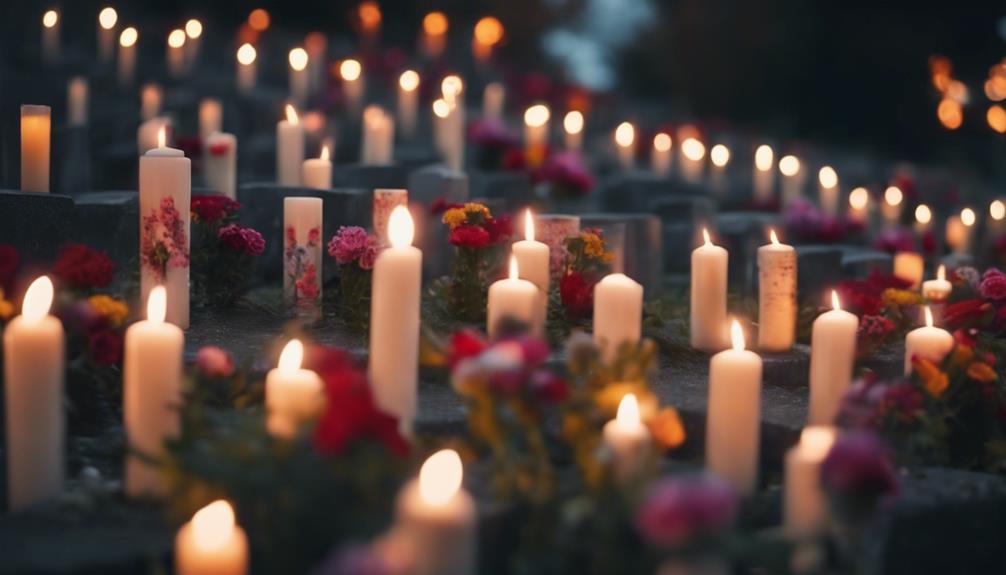
During All Saints Day in Poland, locals partake in the tradition of lighting grave candles, adorning graves with vibrant chrysanthemums, and attending church prayer services. These customs are a heartfelt way to honor deceased loved ones and create a spiritual connection between the living and the departed.
Embracing the solemnity of the occasion, many visit family graves to reflect, pray, and pay their respects.
Candle-Lit Grave Visits
Millions of grave candles, known as zniczy, illuminate the solemn beauty of All Saints Day in Poland, symbolizing the divine presence and honoring departed loved ones through traditional rituals. The flickering glow of these candles creates a mesmerizing sight across cemeteries, where families gather to pay homage to their ancestors.
Alongside the radiant zniczy, colorful chrysanthemums adorn gravestones, adding a touch of vibrancy to the peaceful surroundings. The tradition of candle-lit grave visits is deeply ingrained in Polish culture, fostering a sense of community and respect for the deceased.
During All Saints Day, the atmosphere is one of spiritual contemplation, prayer, and reflection on the lives of those who've passed on. This tradition not only honors the memory of loved ones but also serves as a reminder of the importance of family ties and the continuity of generations.
The act of lighting candles and decorating graves is a poignant way to connect with the past and embrace the present.
Floral Wreath Offerings
Floral wreaths, commonly made with chrysanthemums symbolizing death and rebirth, are a traditional offering during All Saints Day in Poland. Families honor their departed relatives by placing these wreaths on graves, creating a beautiful and solemn atmosphere in cemeteries. The vibrant colors of the wreaths stand out against the backdrop of the graves, symbolizing remembrance, respect, and the eternal cycle of life and death in Polish traditions. Here is a visual representation of the significance of floral wreaths during All Saints Day:
| Symbolism | Description |
|---|---|
| Chrysanthemums | Represent death and rebirth |
| Colors | Signify remembrance and respect |
| Placement | On graves of deceased loved ones |
| Tradition | Enhances the beauty of cemeteries |
These floral tributes play an essential role in the observance of All Saints Day, illustrating the deep-rooted customs and reverence for the deceased in Polish culture.
Church Prayer Services
Church prayer services hold a central role in the rich tapestry of All Saints Day traditions observed in Poland. On this day, many Polish families gather in churches to attend these solemn services, where they honor and remember their deceased loved ones.
The prayers offered during these church services are a way to seek blessings for the souls of the departed and to reflect on the lives they lived. The religious significance of All Saints Day is profoundly emphasized through these special prayers and blessings, creating a sense of spiritual connection and community among the attendees.
These church prayer services not only serve as a time for personal reflection and remembrance but also contribute to the communal aspect of the tradition, bringing people together in unity and shared reverence for the departed. Through these services, the essence of All Saints Day is deeply rooted in faith, tradition, and the collective memory of those who've passed on.
All Souls Day Observances
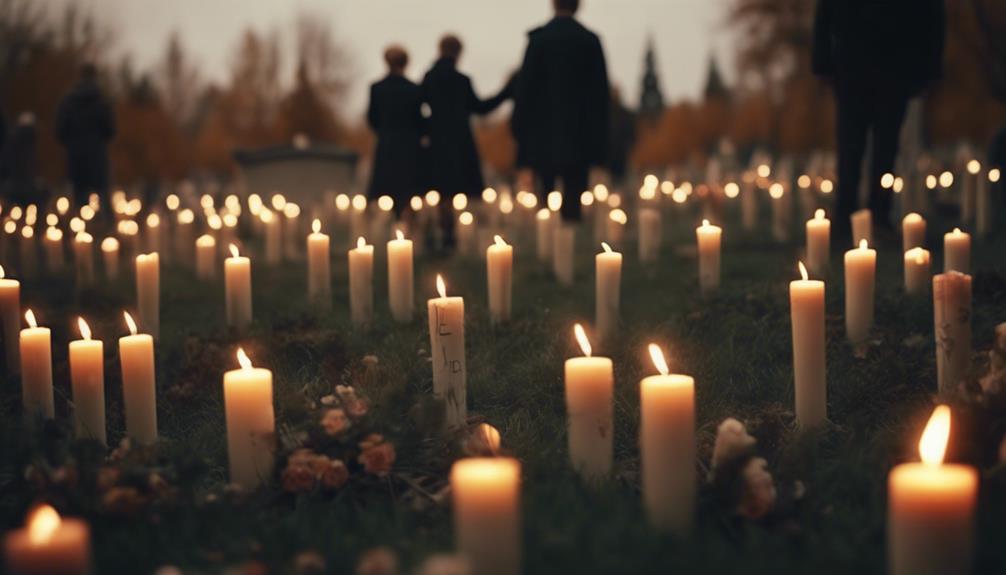
On November 2nd in Poland, families gather at cemeteries to remember and pray for the souls of the departed during All Souls Day observances. This day holds great significance as it allows people to honor and reflect on their deceased loved ones.
It's a deeply rooted tradition where families visit the graves of relatives, light candles, and decorate the burial sites with flowers. All Souls Day emphasizes the spiritual connection between the living and the deceased, fostering a sense of unity and remembrance within the community.
It serves as a time for both personal reflection and collective mourning, bringing families together to pay respects to those who've passed away. Through these observances, individuals express their love and respect for the departed souls while finding solace in the shared experience of commemorating their lives.
Contrasting Halloween and Polish Customs
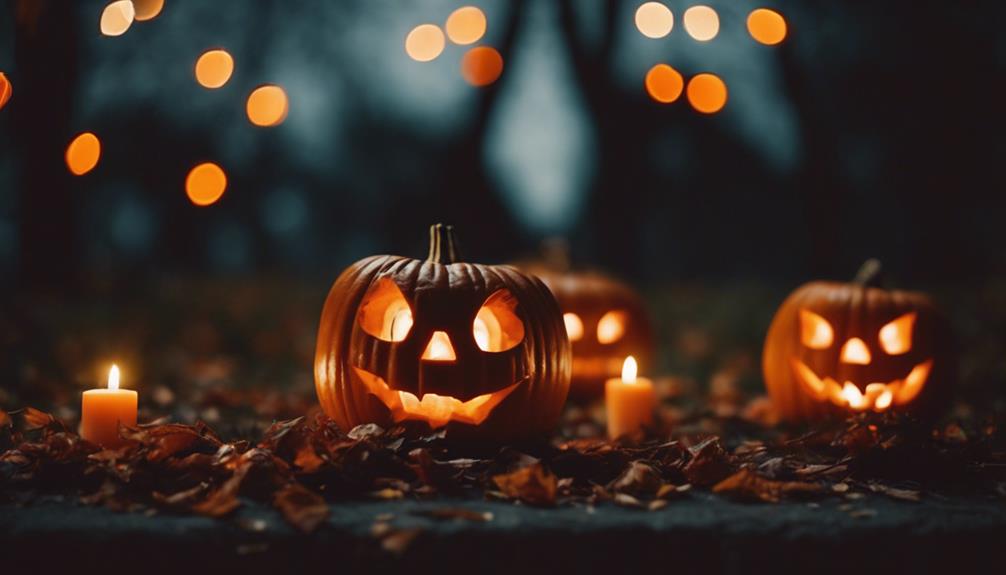
Contrasting with the commercialized and spooky nature of Halloween, Polish customs surrounding All Saints Day focus on spiritual reflection and honoring ancestors. In Poland, All Saints Day is a solemn occasion where millions of grave candles, known as zniczy, are lit, and colorful chrysanthemums adorn gravestones.
This tradition places a strong emphasis on remembering loved ones and coming together as a community to pay respects. Unlike Halloween, which often revolves around costumes and candy, All Saints Day in Poland is about creating a meaningful and reverent atmosphere in cemeteries. These places are seen as beautiful and spiritually significant, fostering a sense of connection with departed ancestors.
The Polish customs during All Saints Day stand in stark contrast to the more commercialized and lighthearted nature of Halloween, highlighting the importance of reflection, remembrance, and honoring the past.
Influence of Western Culture on Poland
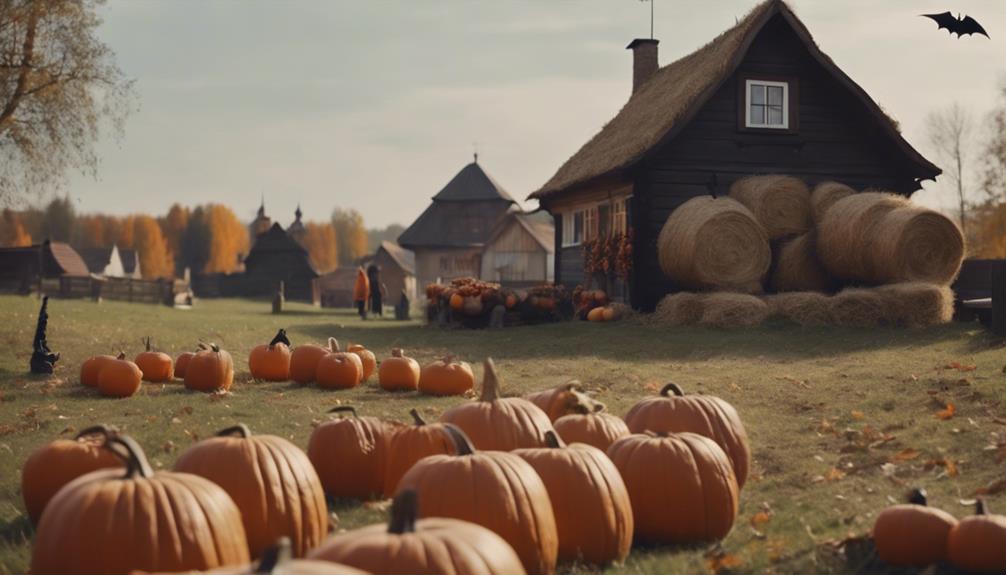
Western culture has had a noticeable impact on Poland, influencing how traditions like Halloween are celebrated. Polish society has adapted to incorporate elements of Western culture, seen in the growing popularity of Halloween-themed events and parties.
This exchange of cultural practices reflects a broader trend of globalization and the merging of traditions from different parts of the world.
Western Cultural Impact
The influence of Western culture on Poland is evident through the adoption of Halloween practices such as costume parties and decorations. Media exposure and the presence of international schools in Poland play significant roles in spreading Western Halloween traditions across the country.
As a result, some Polish families now host Halloween parties for children, showcasing the integration of Western customs into Polish society. Additionally, discussions about Halloween in primary schools during English lessons further highlight the impact of Western culture on the younger generation in Poland.
The popularity of Halloween-themed events and decorations in shopping malls and English schools also demonstrates how deeply Western culture has influenced Poland. Overall, the Western cultural impact on Poland, particularly in the domain of Halloween celebrations, is notable and continues to shape the cultural landscape of the country.
Polish Traditions Adaptation
Amidst the increasing prevalence of Halloween-themed practices in Poland, a significant transformation in traditional customs is becoming apparent. Western influence has led to the adaptation of Halloween-themed parties, especially among the youth in Poland.
While traditional trick-or-treating isn't common, some children are introducing the practice in neighborhoods. Halloween is now widely discussed in Polish primary schools during English lessons, indicating its growing presence in the country.
Polish farmers have even started producing pumpkins, which are becoming more popular in shopping malls and English schools due to Halloween influence. There's an ongoing discussion in Poland regarding the adaptation of Halloween practices while balancing them with traditional Polish customs.
This adaptation of traditions brings a mix of Western culture into Poland, blending it with the country's rich heritage. As these changes continue to evolve, it will be interesting to see how Polish traditions adapt further to incorporate Halloween practices.
Polish Views on Halloween Celebrations
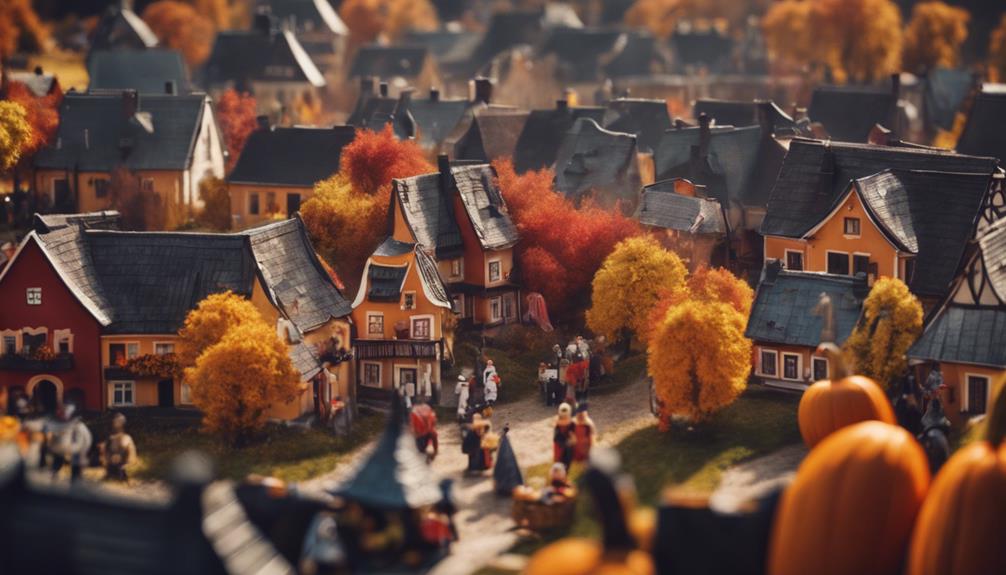
While traditionally not a widely embraced holiday in Poland, Halloween celebrations have been gaining popularity, particularly among the younger generation. In Poland, the focus during late October and early November tends to be on All Saints Day and All Souls Day, deeply rooted in Polish traditions and customs.
However, influenced by Western culture, Halloween has made its way into Polish society, sparking varied views on the holiday. Some Polish families now host Halloween-themed parties, blending modern festivities with traditional practices. There are ongoing debates among Poles about whether to fully embrace American Halloween traditions or to uphold their own cultural heritage.
The discussions often revolve around finding a balance between modern celebrations and preserving Polish values. As a result, Polish views on Halloween celebrations range from enthusiastic participation to skepticism about the holiday's cultural significance. The evolving attitudes towards Halloween reflect a generational shift and the influence of global trends on Polish society.
Community Practices During October-November

Community observances in Poland during October-November revolve around honoring departed loved ones through traditional rituals and gatherings. This time is especially significant due to the observance of All Saints Day, a solemn occasion where families come together to pay their respects to those who've passed away. Here are some key practices during this period:
- Families gather at cemeteries to remember their deceased loved ones.
- Candles, known as zniczy, are lit on graves to symbolize the presence of God.
- Polish cemeteries are adorned with vibrant chrysanthemums and illuminated for a reverent atmosphere.
- Millions of candles are lit across the country during this time, creating a solemn ambiance.
- The atmosphere in Poland during October-November is one of spiritual contemplation and reflection, focusing on honoring and remembering ancestors.
These practices highlight the importance of family, tradition, and remembrance in Polish culture during this time of the year.
Future of Halloween in Polish Culture
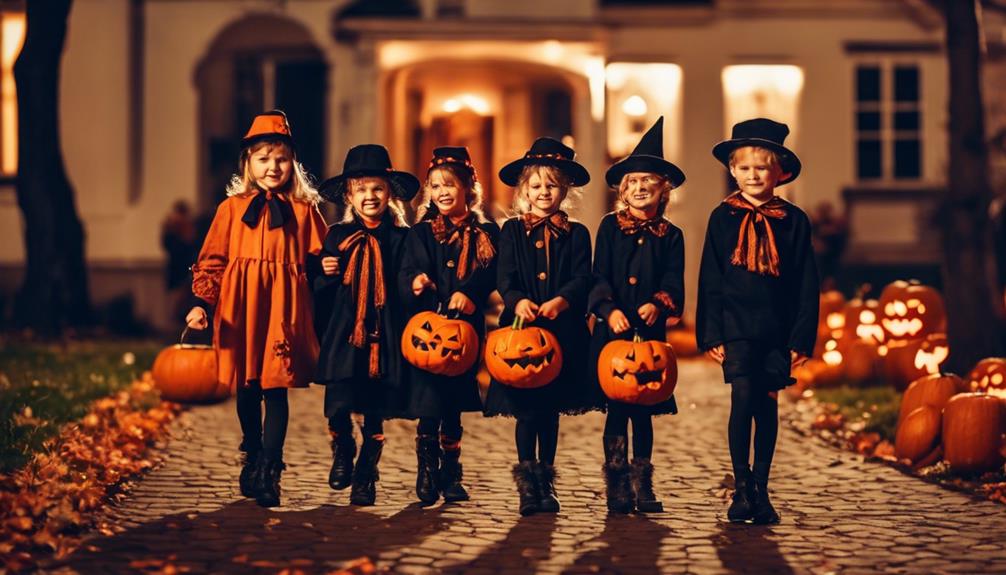
The evolving landscape of Polish culture sees a growing influence of Halloween practices among the youth, sparking debates on the preservation of traditional customs. As Polish society continues to evolve, the future of Halloween in Polish culture remains uncertain. The increasing popularity of Halloween-themed parties and activities among the younger generation reflects a shift towards embracing Western traditions. This trend has led to discussions within the community about whether to adapt to these new practices or uphold longstanding Polish holiday traditions.
With mass media and Western cultural influences playing a significant role in shaping the spread of Halloween practices in Poland, the debate on the future of Halloween is likely to intensify. The introduction of trick-or-treating by some Polish children and the emergence of pumpkin production by local farmers indicate a gradual integration of Halloween into Polish society. Whether this trend will continue to grow, replacing or coexisting with traditional customs, remains to be seen as Poland navigates the intersection of its rich heritage and modern influences.
Frequently Asked Questions
Do Poland Celebrate Halloween?
In Poland, Halloween isn't traditionally celebrated. Instead, the focus lies on All Saints Day and All Souls Day, honoring ancestors with candle lighting and grave decorations.
This contrasts with the commercialized nature of Halloween. The atmosphere during All Saints Day is solemn and deeply rooted in Christian beliefs.
What Is the Polish Version of Halloween?
The Polish version of Halloween is known as Dziady. It's a traditional feast that blends pagan folk rituals with Christian beliefs.
Dziady involves offerings of food and lighting fires to honor deceased ancestors. Celebrated on November 1st, this event has specific rituals in various regions of Poland.
Deeply rooted in Polish cultural heritage, Dziady combines pagan and Christian customs in a significant cultural celebration.
What Is Dziady in Poland?
Dziady in Poland is a traditional celebration blending pagan and Christian customs. Offerings like milk, cake, and fruit are made during ceremonies to honor deceased ancestors. Participants wear Karaboshka masks to guide spirits back to the afterworld.
Feasting at burial grounds is also part of the tradition. These practices were observed in Polish regions until the early 20th century, showcasing the rich cultural heritage of the country.
What Country Is Halloween a Holiday?
Halloween is celebrated as a holiday in countries like the United States, Canada, Ireland, and the United Kingdom. It's known for costumes, trick-or-treating, and spooky decorations.
The holiday originated from ancient Celtic traditions and has evolved into a fun and festive occasion for children and adults alike. Many countries have adopted Halloween customs, making it a widely recognized celebration in various parts of the world.
Conclusion
As you explore the traditions of Halloween in Poland, you may find a unique blend of customs and beliefs that set it apart from the typical celebrations in other countries.
While Poland may not fully embrace the commercial aspects of Halloween, the observance of All Saints Day and All Souls Day offers a rich cultural experience.
Embrace the differences and appreciate the rich tapestry of traditions that make Poland's celebration of Halloween truly special.
